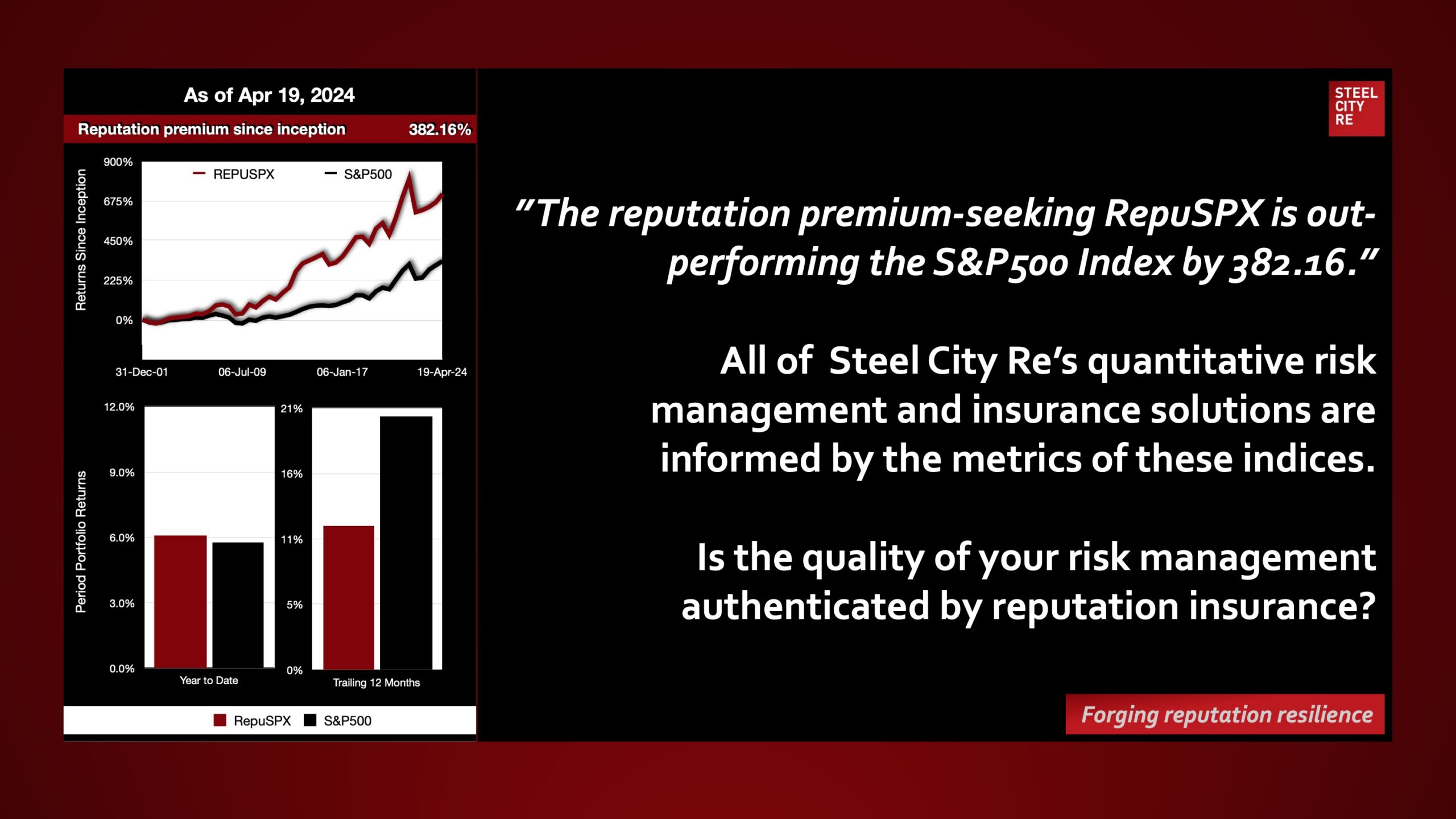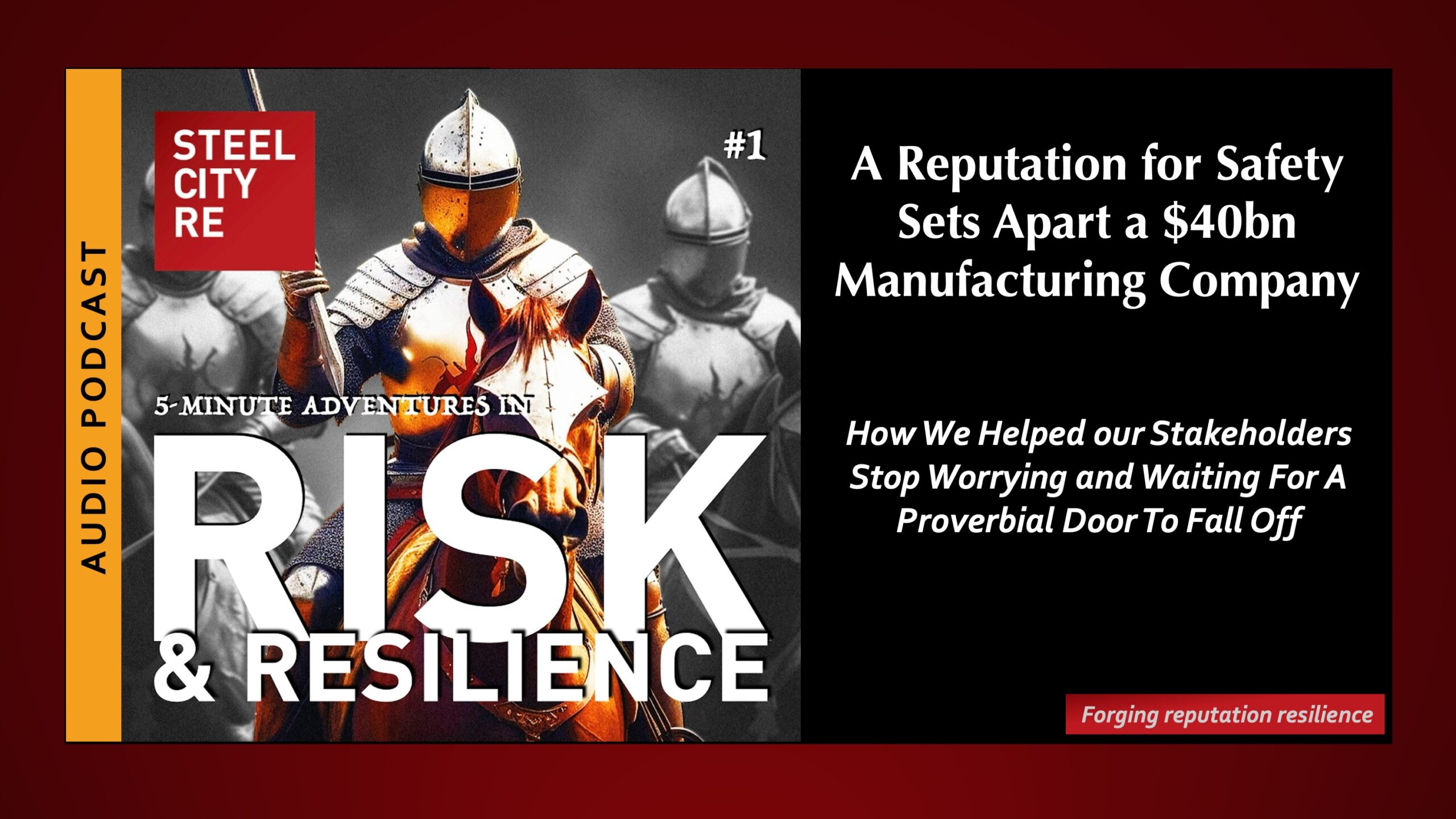Risk Strategy (ERM)
Steel City Re’s Reputation Resilience Program protects and enhances a client’s reputational value by augmenting its current enterprise risk management apparatus. The program authenticates a valuable message to stakeholders: Thoughtful reputation risk management and dutifully governance practiced here.
Implementing Reputation Risk Management Best Practices
Not since the 1980’s have firms and their leadership faced such a perilous political, social, and economic environment. Risks include an increased likelihood of stakeholder activism, shareholder litigation, derivative litigation, and regulatory opprobrium. Corporate costs include equity value loss coupled with the accompanying long tail of impaired cash flow from reputational value loss. All adversely impact a firms’ leadership personally.
Steel City Re’s reputation risk management and governance solutions enable clients to protect and enhance their reputational value. It is based on a behavioral economic framework and includes risk transfer financing that insures to models (parametric insurance.)
The solutions include processes for reputation risk management and governance that overlay a client’s existing enterprise and governance systems. They define the managerial organization, information flow, and strategic insurances evidencing the processes. Last, they provide a strategy to leverage the processes, organization, and artifacts into a simple, authenticated message to stakeholders that the client is thoughtfully managing and dutifully governing its reputation.
Reputation Risk Management Best Practices: Process and Deliverables
The goals comprise the following:
- Assess and determine the baseline enterprise reputation risk management and governance systems and develop a strategy for augmenting them with enhanced processes.
- Establish a risk management overlay comprising a standing cross -functional senior executive body (Reputation Risk Leadership Committee) chaired by Director Risk Management that centralizes stakeholder intelligence, measures and analyzes the implications of the intelligence on corporate reputation value, and recommends action via the Chief Legal Officer to the Board.
- Integrate review of the recommendations from the Reputation Risk Leadership Committee into the Board’s oversight of mission-critical activities.
The deliverables comprise the following:
- Reputation Resilience Strategy Plan
- Initial Quantitative Report
- Monthly Quantitative Report Updates
- Compendium Of Written Controls
- Underwriting Reports
- Parametric Policies
- Evidence For Documenting Board Oversight
- Communications (Marketing) Consultative Support
The deployment impacts the enterprise risk management apparatus (governance, leadership, controls, and insurances) and increases its situational awareness of external changes that may create reputational risks that are cultural climate (reputation and ESG)-related. Reputationrisk management best practices are valued by institutional investors, regulators and the courts. The composition, timing and scope of the deployment are bespoke and tailored collaboratively with the client.
What’s your strategy?
Reputational risk is a concern for every company, organization or individual in corporate leadership. Let us help develop your strategy for reputational resilience.



